See You at the Equator: Severance Season 2 Discussion (part 10)
Episode 210, "Cold Harbor" SPOILER ALERT
“See You at the Equator”
For our final installment of Severance discussion, I’m simply offering up plot points, discussing them as they come. If you’re just joining the conversation, you can catch up with discussions of previous episodes: 201, 202, 203, 204, 205, 206, 207, 208, 209.
No cold open for “Cold Harbor,” just the title credits.[1] The name of the animator is Oliver Latta. Follow him on Instagram.
Cobel is surprised to learn of Irving’s drawings. That’s one lingering question.
Jame’s conversation with Helly R. “I do not love my daughter.” “I sired others in the shadows.” Which others? Will we meet them? Harmony?
What a cool shot, the silhouettes, Helly’s ID card, the pen.
Back in the cabin, Mark S. realizes the implications of what Devon and Cobel are asking. “You want me to give my life, the lives of everyone down there, just to save one person you happen to care about.” Philospohy 101 Utilitarian thought experiments tell us that this is a bad equation. It’s the Private Ryan problem. Why give up X number of lives to save one person? If we’re doing life-for-life math, then no, it doesn’t add up. Most of us, when we think about war, make the same mistake. Life-for-life math never adds up, and it’s never the point. The point is the kind of world we want to live in. We (outies) don’t want to live in a world where people are taken and locked away against their will. We don’t want a world where this is a normal accepted practice. We could easily convince other outies to give their lives for this cause. It’s a noble cause. But we can’t convince any innies to do the same, because they don’t live in or understand the outie world. Moreover, they wouldn’t merely die—they’d cease to exist. It’s sort of like convincing a person to give their life for a battle raging in Heaven. Which, people fucking do that.
They’re asking Mark S. to become a martyr, and he says no.
The conversation we’ve been waiting for since 102 begins at last. The look on Adam Scott’s face, the subtlety, just slays me.
Throughout this scene––rendered through the video camera, which is interesting and deserves some thought––Scout tries to manipulate S., to convince him, perhaps to coerce. And ultimately Scout doesn’t have a convincing argument. S. is persistent and kind of annoying. How would this kind of conversation had played out if they were face to face instead of remote?
Scout getting Helly’s name wrong is the breaking point for S. Of course there’s the callback to Helena getting Gemma’s name wrong—all innies are alike. But more important, S. sees that Scout doesn’t take him seriously as a person. And then Scout says, “I love that you had that experience.” Scout implies that the experience is over, and we can see the turn happening in S.’s mind, like, “what do you mean, had?” The next few lines from Scout are what convinces S. not to play ball:
“Now you can imagine, like, what you and Heleny have but multiply, like, thousands of days of, like, joy, and arguments, and passion—then you can see why I have to get my wife back. I have to have her back.”
These words make S. realize that he will never have “thousands of days of, like, joy, and arguments, and passion” with Helly. S. can see how important these days are to Scout, and he realizes that that’s what life is.
S. accuses Scout of lying. S. knows that outies lie—his only association with outies is Helena, a terrific liar, so why shouldn’t Scout be a liar as well. It’s fascinating to see how much little respect S. and Scout have for each other, especially later when we see Dylan G. and Dylan George speak to each other.
“We are in this together. Can’t you just trust me?”
Is this heavy-handed direction, or is this brilliant direction? I like it. I didn’t see the fire on my first watch. I noticed the inside/outside device, and the warm/cool colors, but I didn’t see the fire. My rule of thumb is, if I don’t see the framing device (in this case, the fire) on the first watch, then it’s doing the job of subtle underscore.
(Any time we see a character called “Mark,” we can bet that he is a target or pawn of some kind—a “mark.” In Severance, one character is Mark Scout, which, say it slow enough, becomes Mark’s Out. The other character is Mark S., which I want to sound like “Marx,” so Professor Ides can have her communist interpretation of the show, but really sound more like “Marcus.” The two most famous Marcuses are Aurelius (emperor of Rome from 161 to 180) and Brody (dean of students at Marshall College from 1939 to 1944).
This is the first time we have any real indication of what the MDR numbers are, what they mean. We suspected that the four bins corresponded to the four tempers, and now we know.
Cobel explains that “refining macrodata” is innie building. Every time Mark completes a file, he is building a new innie consciousness for Gemma. Does this mean that each file completed by any MDR is also a new consciousness? Does this mean that a file was completed before the first innie? Who was the first innie, and are they still alive? Does this mean that completing a file is the same as creating a life? If it is, then what do we now know about the morality of Macrodata Refinement? My first instinct is to say that the more consciousnesses there are, the more potential problem-solvers exist in the world, and here without the problem of additional mouths to feed, or other resources to consume. Resource depletion is the number one problem with population growth, and here it is, solved, ta-da. Well golly—no wonder the Eagans are so excited.
Cobel’s “explanation” begs a host of philosophical questions.
Mark S. makes his play, and Scout goes for it, and we find ourselves back on the Sevr’d Floor. This might be the last time we ever see Mark S. enter the Sevr’d Floor as normal, as we’ve come to know.
We have a new painting, “The Exalted Victory of Cold Harbor.”
Here’s a list of every character we see in the water, from left to right: Gwendolyn Y., Dario R., Balf, Mark W., Danise, Petey Kilmer, Patton, Rebeck, Elizabeth, Harmony Cobel, Burt G., Irving B., Felicia, Ricken Hale, Helly R., Devon Scout, Dylan G., Mark S., Miss Casey, Lorne, Malice, Seth Milchick, Wyatt, Dream, Doug Graner, Frolic, Woe, Miss Huang, Goat Man, Shadow Dylan, Natalie Kalen, Shadow Mark, Shadow Helly, Shadow Irving. The back row, standing atop the tallest waterfall on the planet, we have the Lumon CEOs (aka the Board or the Bored…?). From left to right we see: Ambrose, Myrtle, Baird, Jame, Helena, Kier, Leonora, Pip, Gerhardt.
Helly and Mark S. are together again. I can’t even remember, exactly, when they were together last. Mark’s been out of work—it’s been days for Helly, and hours for Mark S. They walk into MDR to find the statue of Kier, brought up from Perpetuity. “Fuck me,” Helly says, meaning, “my God,” to which Marcus Brody responds, “yes, that’s just what the Hebrews thought.”
Milchick gets things done. He’s always on time. I wish I could be as on-time as he is. He sets up the “five months” deception in 201 in just a few days. Here in 210, he has to be in several places at once, and he’s alone, having sent Miss Huang away early. Did he suspect the imminent Macrodata Uprising, and send her away to keep her safe? Perhaps…
Why do they all think that Gemma will die when Cold Harbor is over? How, exactly?
Helly encourages S. to help Scout save Gemma. “At least you’ll have a chance at living,” she says.
“But I want to live with you.”
What does this mean? This might be the most cryptic line in the entire series. Is this supposed to mean that the Helly consciousness is one the of the files that Mark completed? Or that the Helly consciousness is based on Gemma? Perhaps Helly R. is a compilation of files Mark completed? Does Macrodata Refinement need to create a consciousness which can then be stored inside a chip before Severance can happen? How does he eat and breathe and other science facts???
A few weeks ago I wrote about an episode of Star Trek: The Next Generation called “Yesterday’s Enterprise.” In that story, characters become aware that they are conscious in an alternate (“incorrect”) timeline. They choose to fix the space/time continuum, knowing that they will cease to exist, in favor of their “correct” selves. One character, Tasha Yar, realizes that she won’t be alive in the correct timeline, and she finds a way to continue her existence. The rest of the “incorrect” characters apparently feel a duty to the order of the universe, so they opt to sacrifice themselves. To oblivion with their memories, experiences, desires, fears, delights, traumas. Their decision is justified by the fact that there is a serious war on, that if they revert to the way things were, they might erase a great deal of suffering. How many other Tasha Yars were part of that alternate universe, suddenly granted consciousness, and then suddenly silenced?
According the internet, Michick’s run was an onset improvisation by Tramell Tillman. It’s details like this that make the program fun, and also tell us that we can’t take it too seriously—it’s only a show, we should really just relax.
The relationship between the Dylan innie and outie are fundamentally different than the S./Scout relationship or the Helly/Helena relationship. The Dylan innie and outie are in love with the same woman, and she loves both of them. In the real world, that would make them rivals, but in Severance, it makes them allies.
The equator: a building so big it became a continent.
Mark S., at last, completes Cold Harbor, and we hear “Sirius,” by The Alan Parsons Project, as if we’re at a Chicago Bulls game in like 1992. The Kier statue speaks. The conversation between “Kier” and Milchick, the award show comedy sketch is difficult to parse. Are we supposed to wonder if Kier is really there? Is this the Board? I find that I don’t care much about the statue. On the other hand, I love the marching band, Choreography and Merriment, playing “Kier, Chosen One.”
Jame enters what looks like a college library study closet to watch Gemma dismantle the crib.
The diegetic music of the marching band adds intensity to the sequence. It feels like the end of Return of the Jedi, with three distinct dramas happening at once.
Imagine the writer who thought of having Dylan push the snack machine into the restroom doorway to block out Milchick, like, “guys, guys, what about this…”
What the fuck is this supposed to mean? Entombed? Like the ancient Egyptians mummified the pharaoh’s cat and wife when he died, even if they were perfectly healthy? What does it mean to guide a spirit to Kier’s door?
“We commit this animal to Kier and his eternal war against pain.” This might be the best clue we have toward what the Eagans are doing. I hope we get to see more of this in season 3. Who wouldn’t want a war against pain? The Eagans are rendered on screen as the creepiest motherfuckers, but in the abstract, how do we argue against abolishing pain, and eliminating the problem of resource depletion? If Elon said, “hey, I’m rooting through the government because I have a plan to make sure that everyone has enough space and food and your feet won’t hurt,” we’d all be like, “yay, fuck the park service.” Maybe that is his plan, and the name of the plan is “Rocketship: Xpedition Mars.” The benefits Rocketship XM would be generations away, which means we’re all innies who won’t get to see the results of our sacrifices.
The moment when Drummond catches S. trying to open the door to the Testing Floor elevator hallway changes tone several times in a few seconds: first we have the fear on Mark’s face, the score, and the deep voice of Drummond intoning “Mark S.” Then a playful moment when S. eeks out “wrong door…” Then Drummond pins him against the wall. What’s he gonna do, we’re all thinking, and then that sucker punch to the face. The speed and intensity of the punch. The black suits against the white hallways. Drummond’s grunts and growls. The unsteady hand-held camera. The music has disappeared and won’t return until the fight is over and Drummond has his hands on Mark’s neck. And Mark is only saved because Lorne from Mammalians Nurturable is played by Brienne of Tarth.
This is Mark S.’s first fight. He loses, but it could have been worse.
Why is Dr. Mauer so surprised and delighted that “the barrier is holding?” Don’t we already know that Severance works?
We have to take notice of the red, white, and blue. Does it mean anything? Who cares. The image is shocking and we’re here for it.
Scout roaming the halls of the Testing Floor. This is the first time he’s ever seen these white walls. We’ve seen actor Adam Scott in white halls for years now, but this is Scout’s first time.
Okay, I admit it: there really is a Marxist thesis waiting to happen here. Or anti-Marxist. Like Lenin’s, Kier’s utopia is doomed.
Mark opens the door to Cold Harbor, and we have our first of four combinations of Mark/Gemma interactions in the next eight minutes.
Mark Scout/Cold Harbor
Mark Scout/Gemma
Mark S./Miss Casey
Mark S./Gemma
Here, Dr. Mauer refers to the 25 innie consciousnesses living inside Gemma’s Severance chip. He loves them, every single one, in his demented way. And he’s right. All that talk about innie rights. All talk.
How does a show move from beat to beat like this one does? Severance has enormous trust in its audience to track what each version of Mark/Gemma knows and doesn’t know. The Hitchcockian Suspense Ratio (what the audience knows vs. what the character knows—also, I just made up that term—not the concept—just the term[2]) changes with each severance movement, and we can follow each change because the show has taught us how.
This moment when Helly slides her stocking feet into the frame: I’ve seen it five times and I gasp each time.
The Mel Tormé song hits and we know he’s gone. They run, inside their own minds (Helly gives one last look back at Gemma…).
The final shot feels like a 1970s spy film, and also resembles a painting that might hang in the Sevr’d Floor.
The end credits are cool… I wonder who made them…
That’s all for Severance season 2. Thanks for being here every week! What did you think about “Cold Harbor,” or season 2 overall? Leave a comment below.
If you know other Severance fans who might enjoy these conversations, please share far and wide.
[1] What are the chances that we’ll have all new music and credits for season 3, a la The White Lotus…?
[2] Hitchcock once said, of bombs in movies, “there’s no terror in the bang, only in the anticipation of it.” Severance is a terrific student of Hitchcock. Incidentally, this quote also explains why erotica is much sexier than porn.




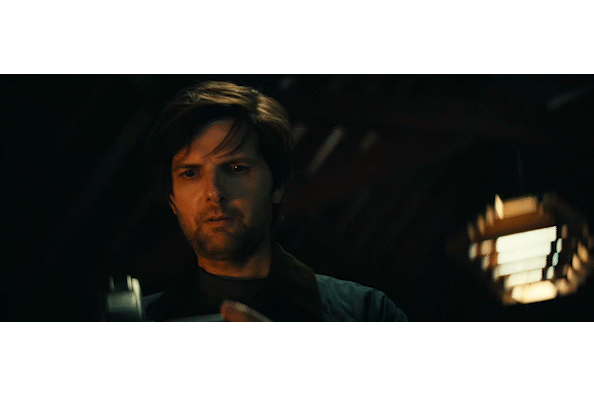


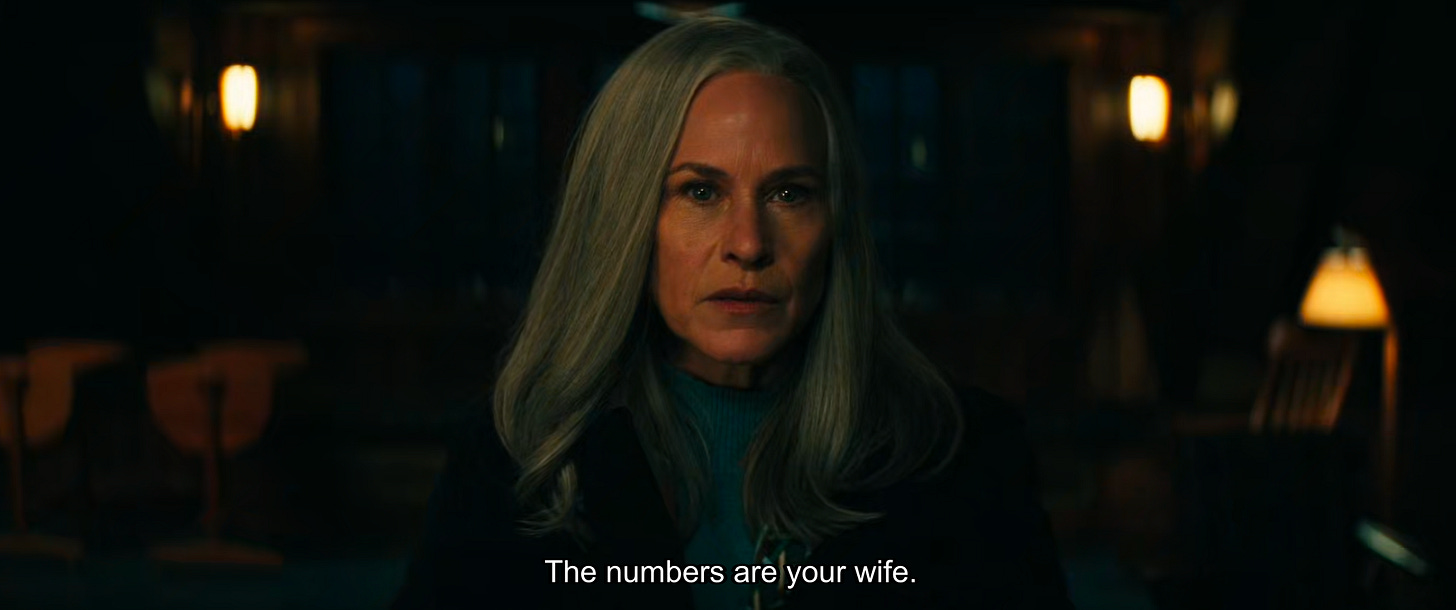

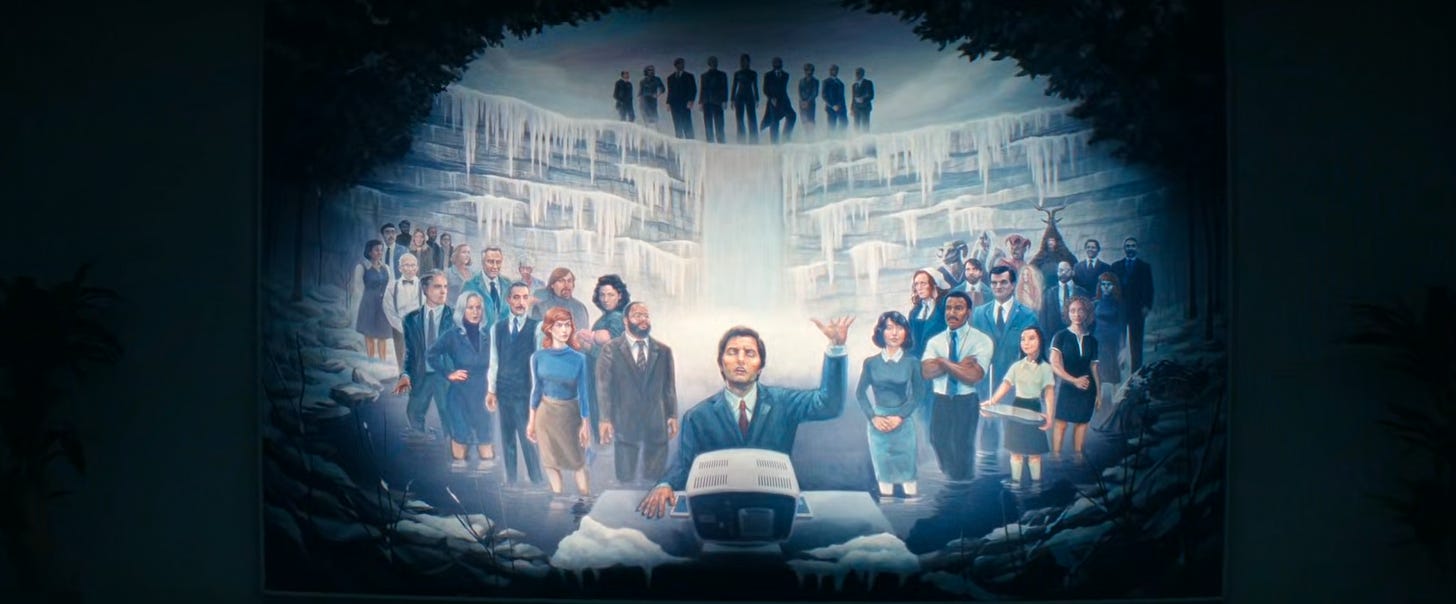
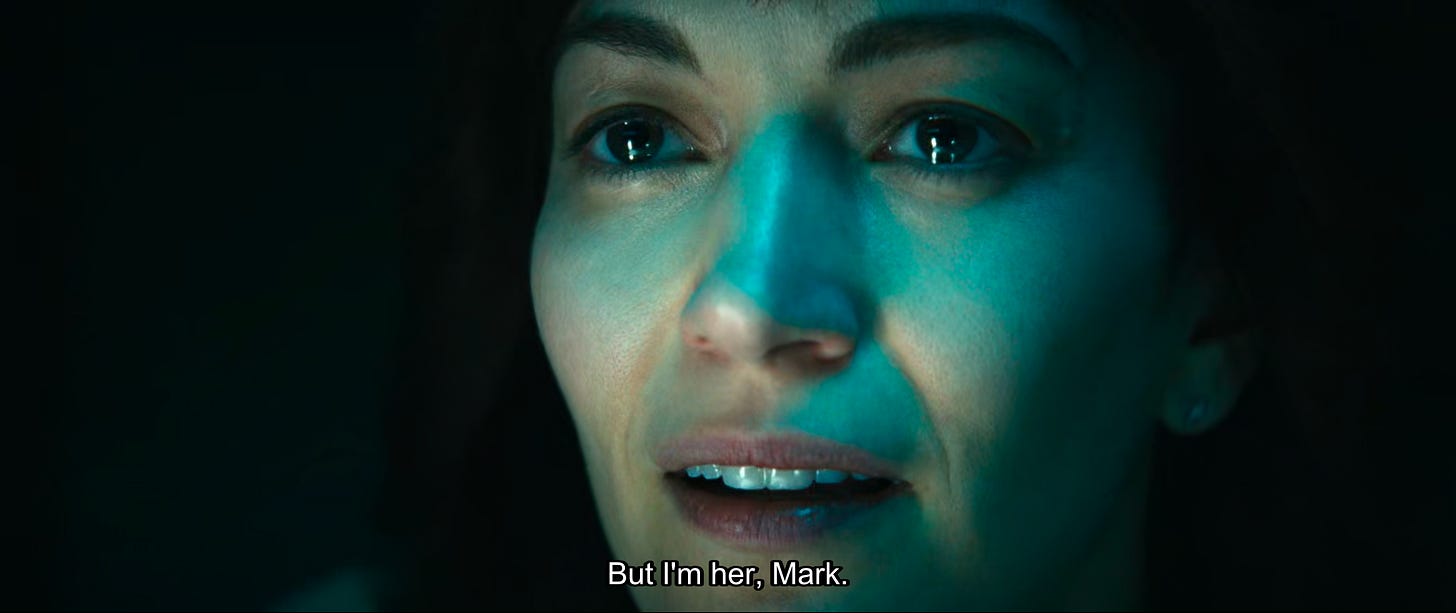
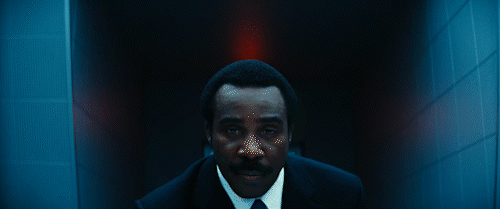



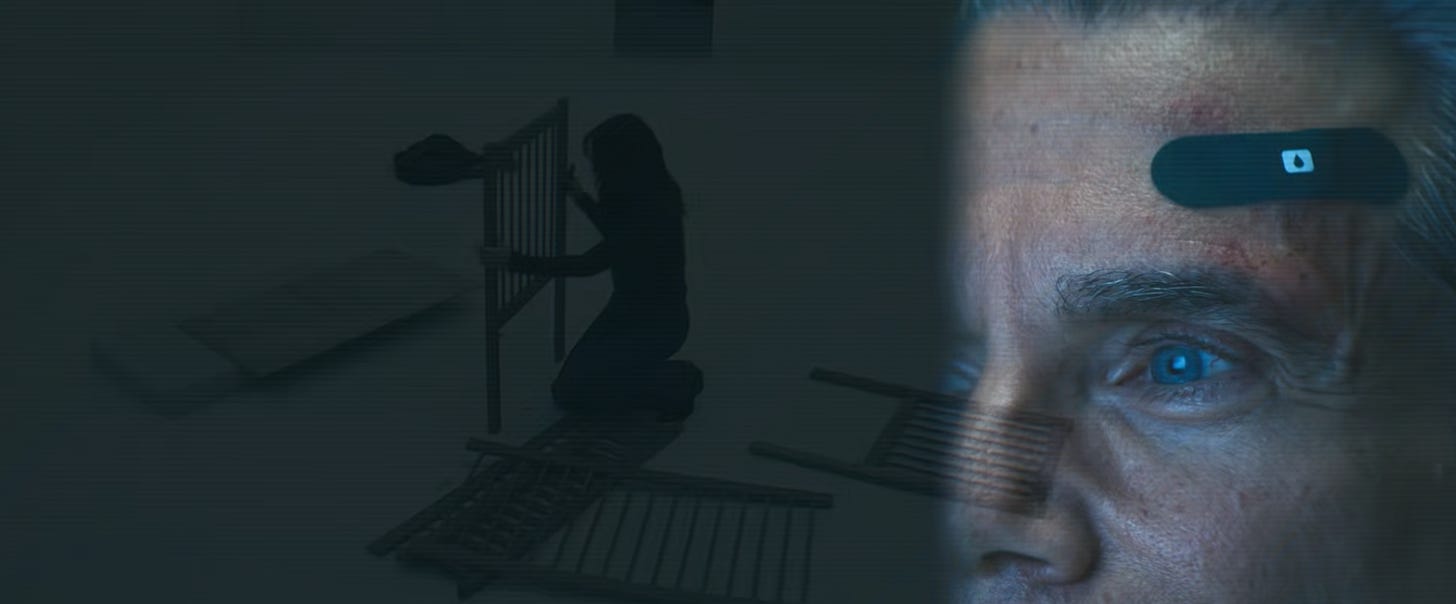

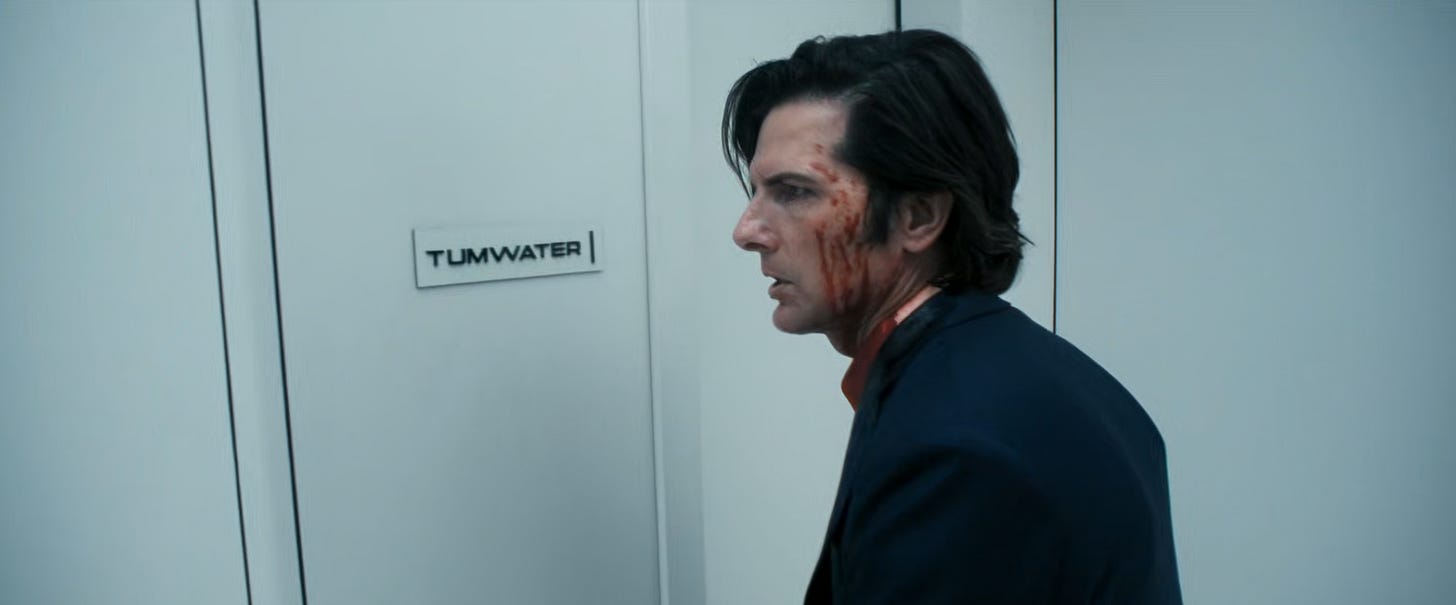

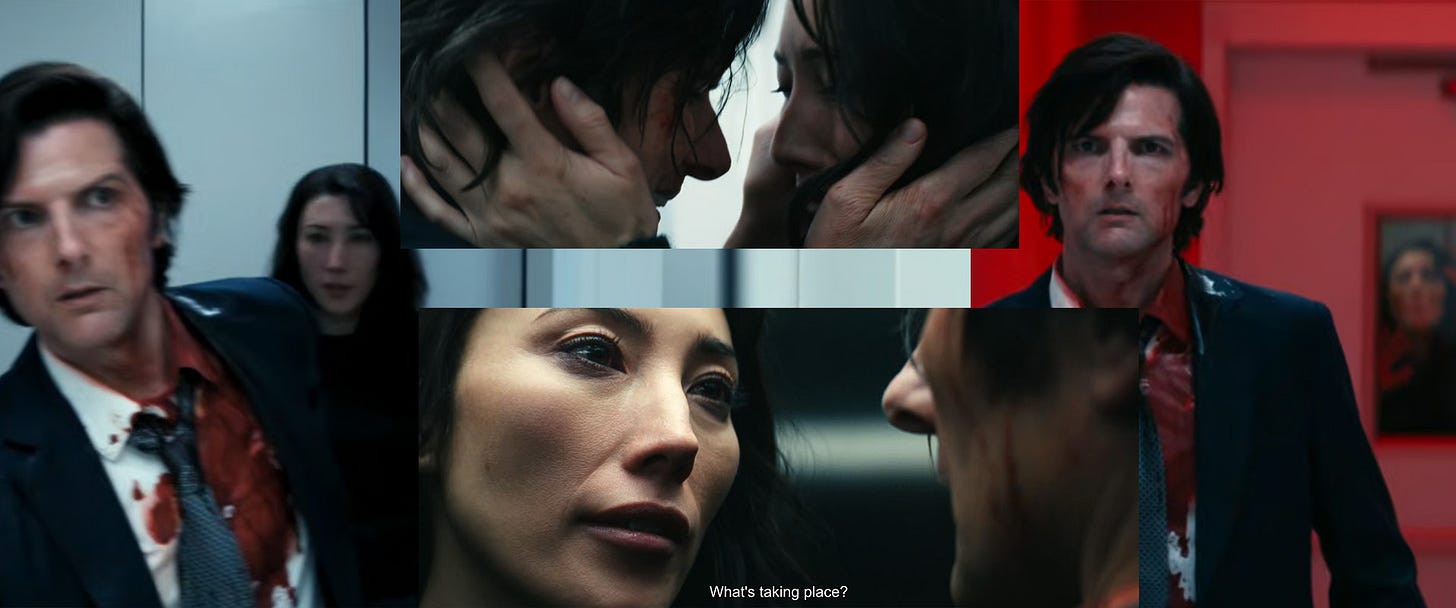

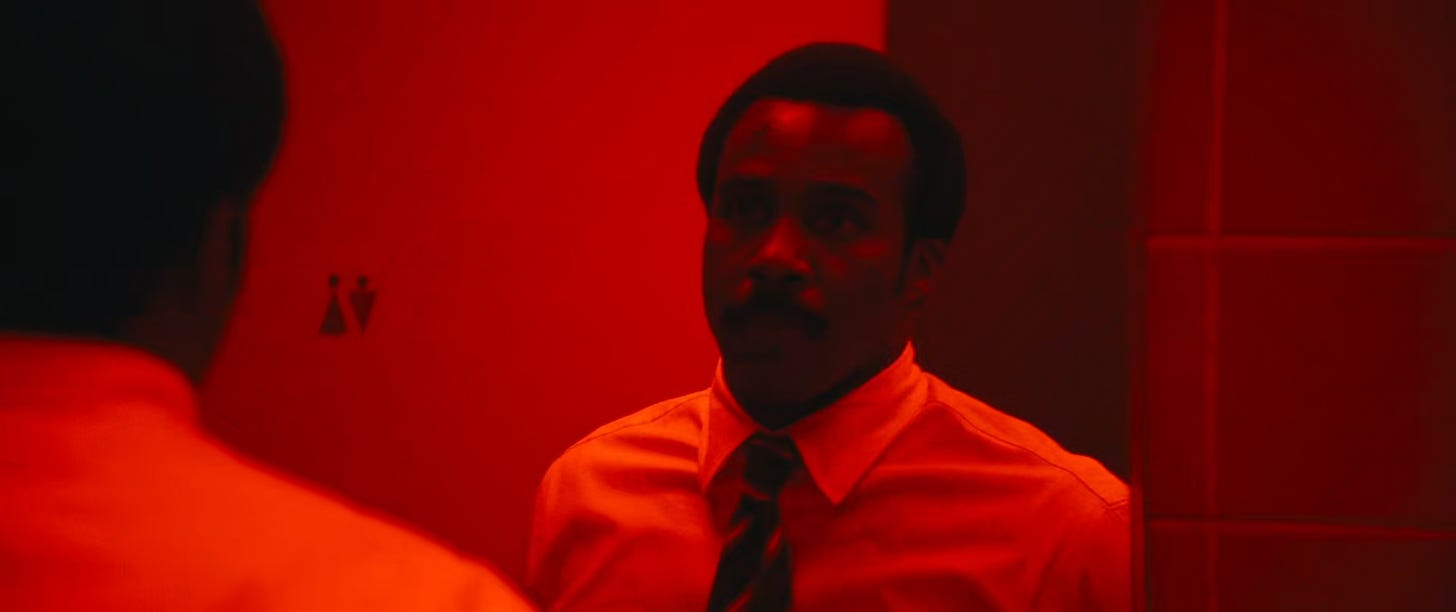
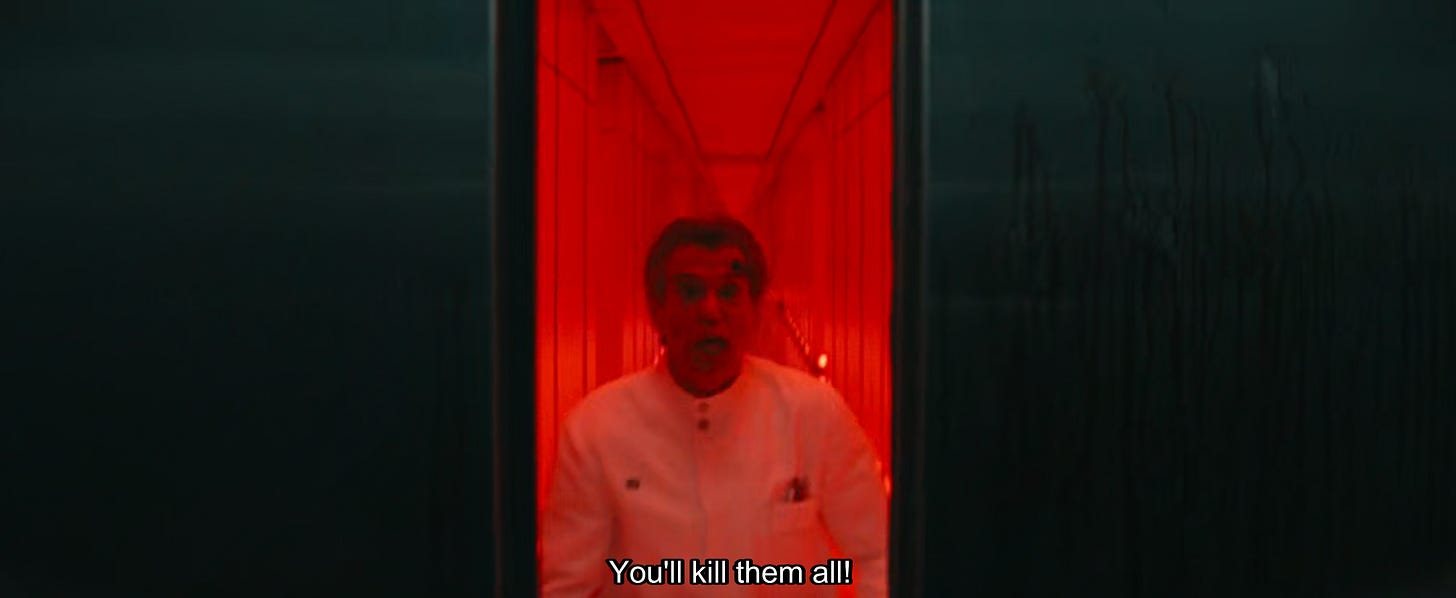
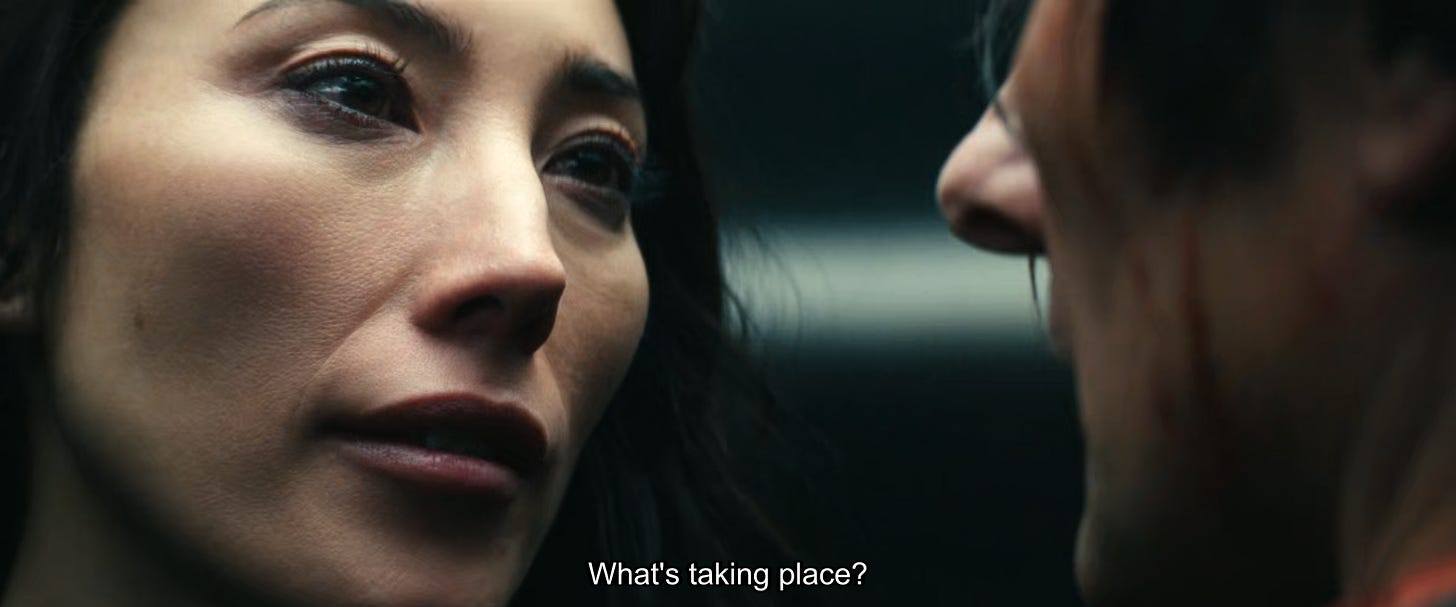
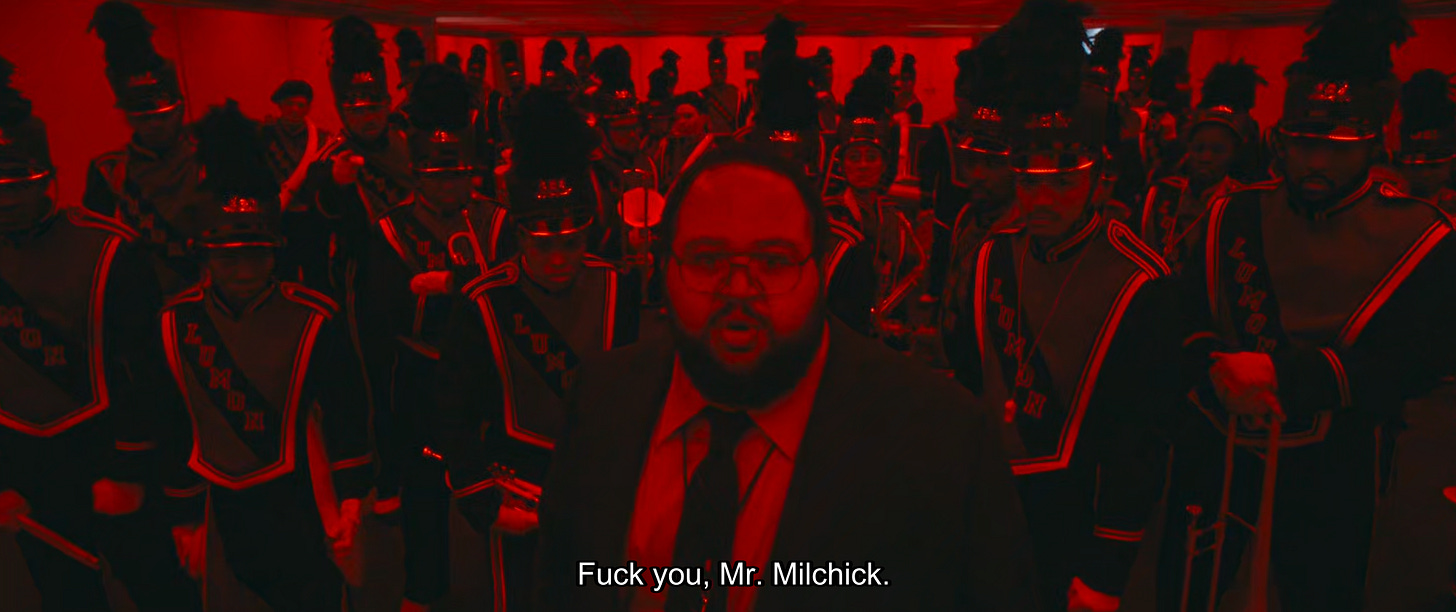
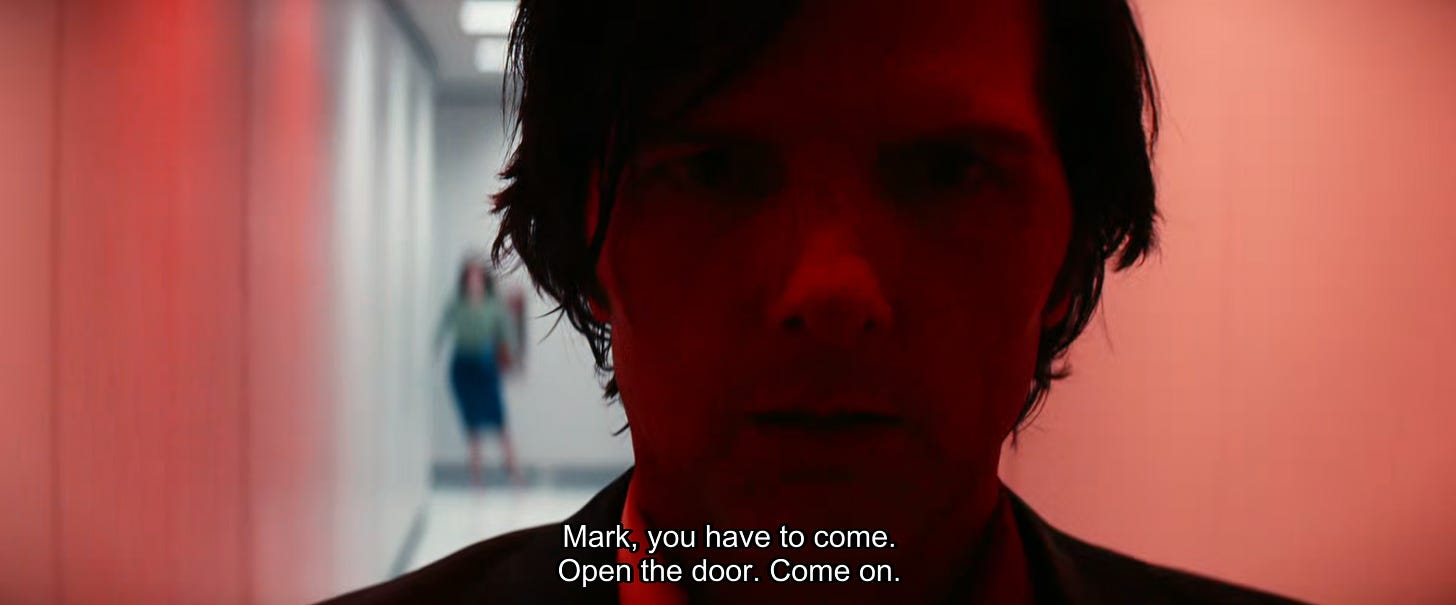
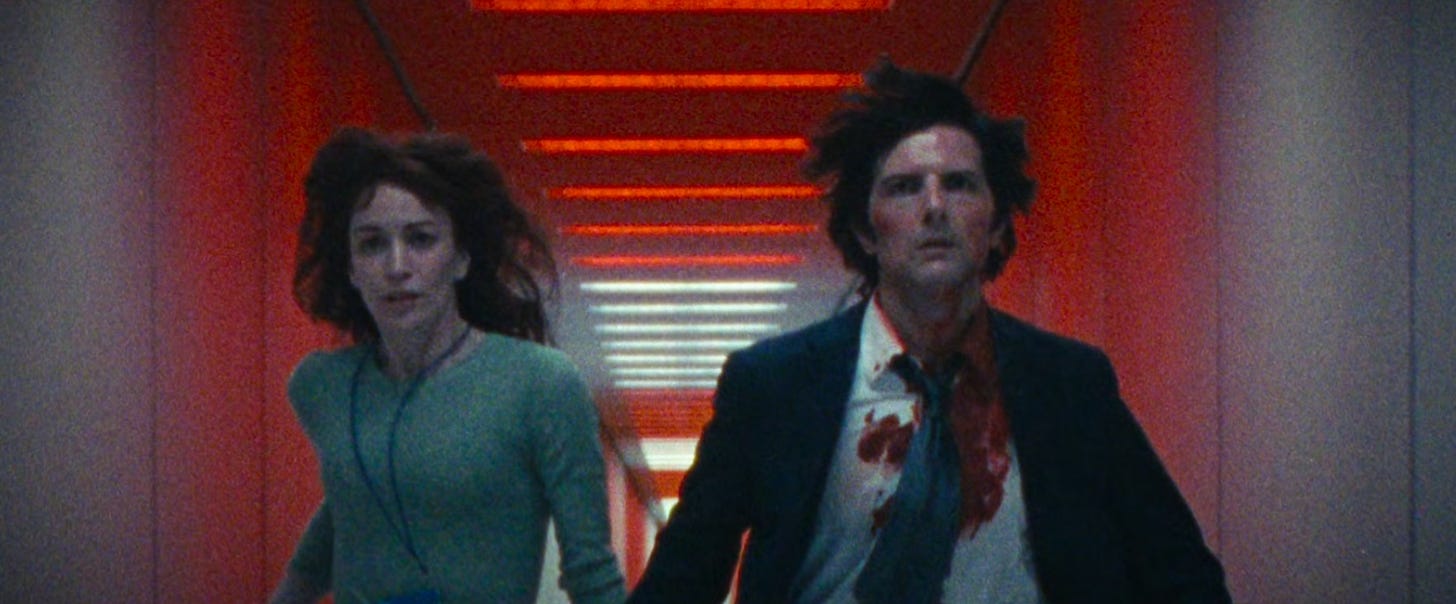
Innie Mark is a brat and incredibly selfish for robbing outtie Mark (the rightful owner of his body might I add) of joy. Next season I want a Gemma vs. Helly fist fight at some point. Ricken was/is definitely a goat.
Such a deep dive! What a study!